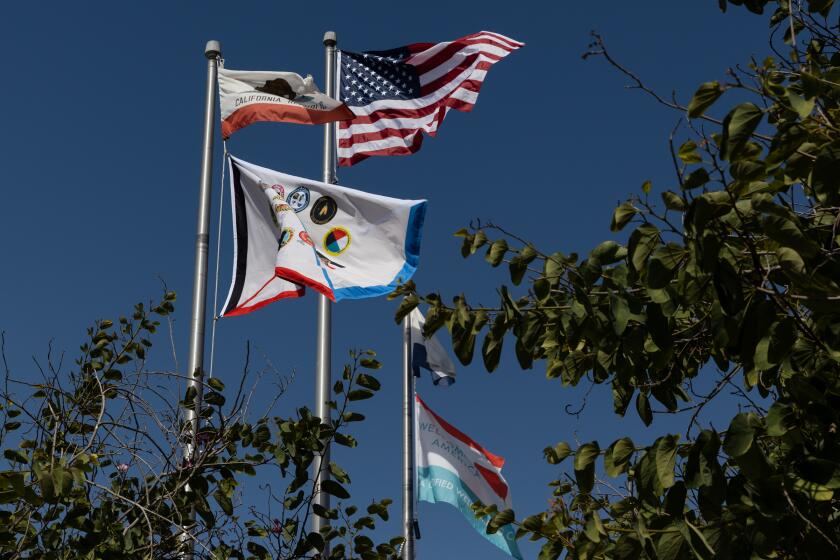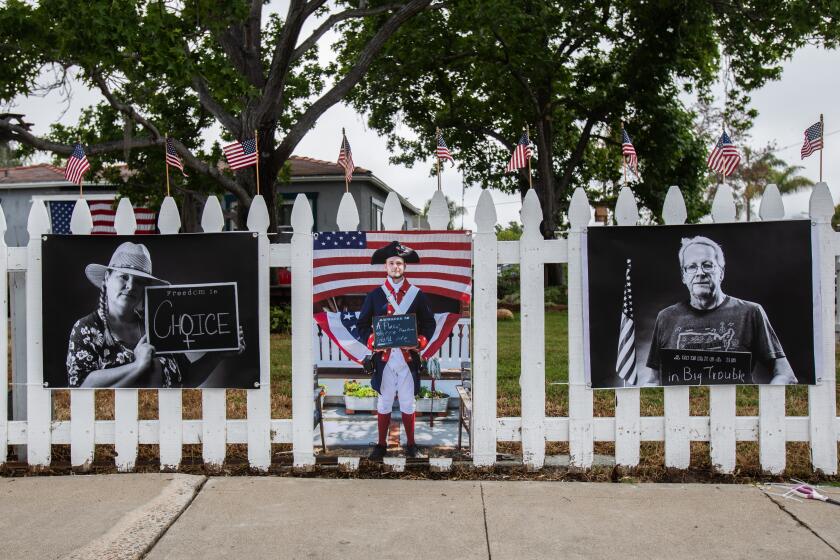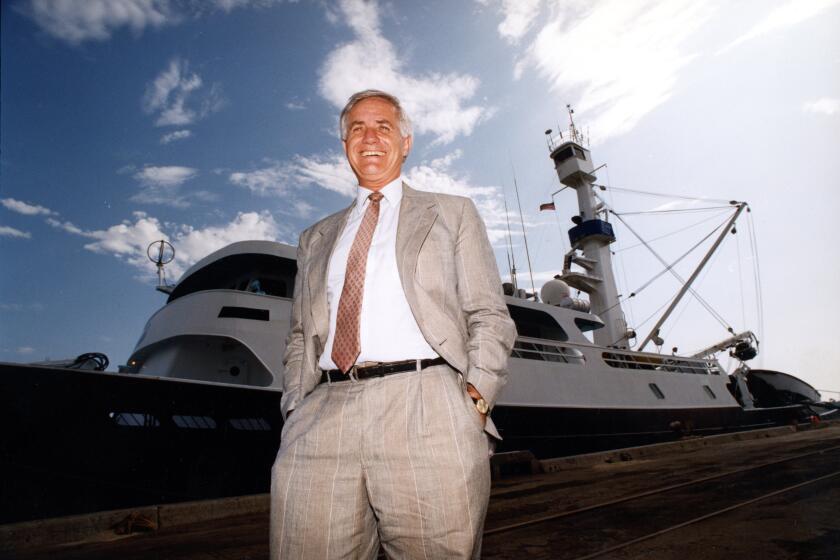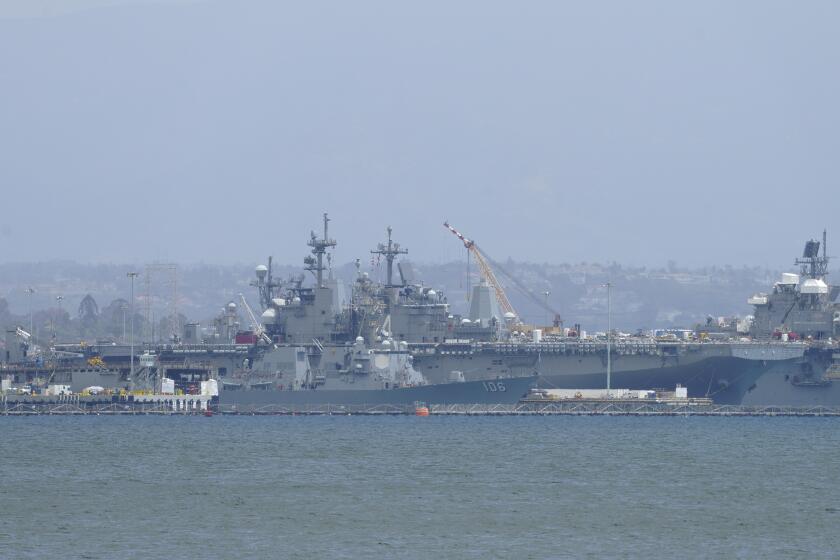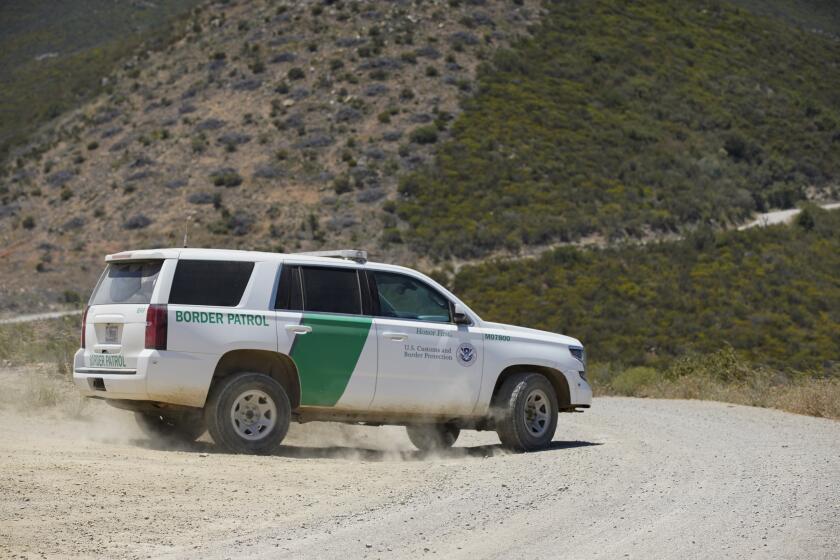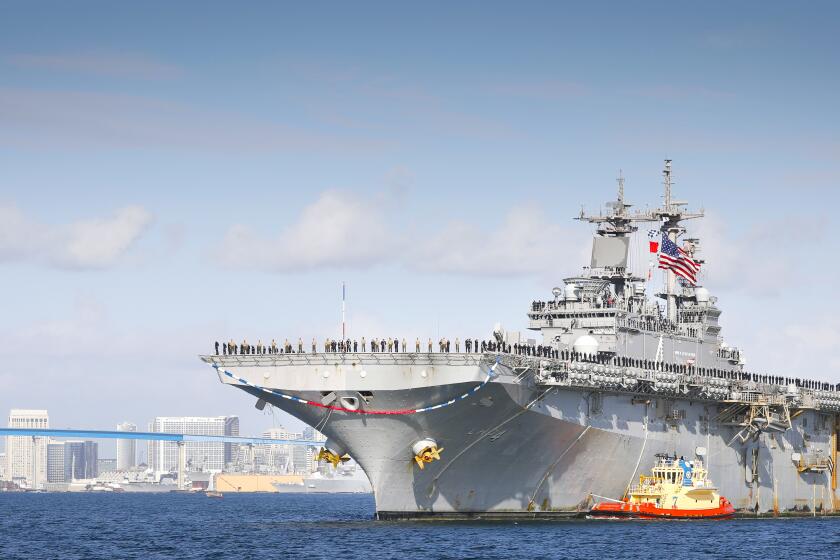Underwater mystery: Did diver find Navy plane that crashed off coast in 1943?
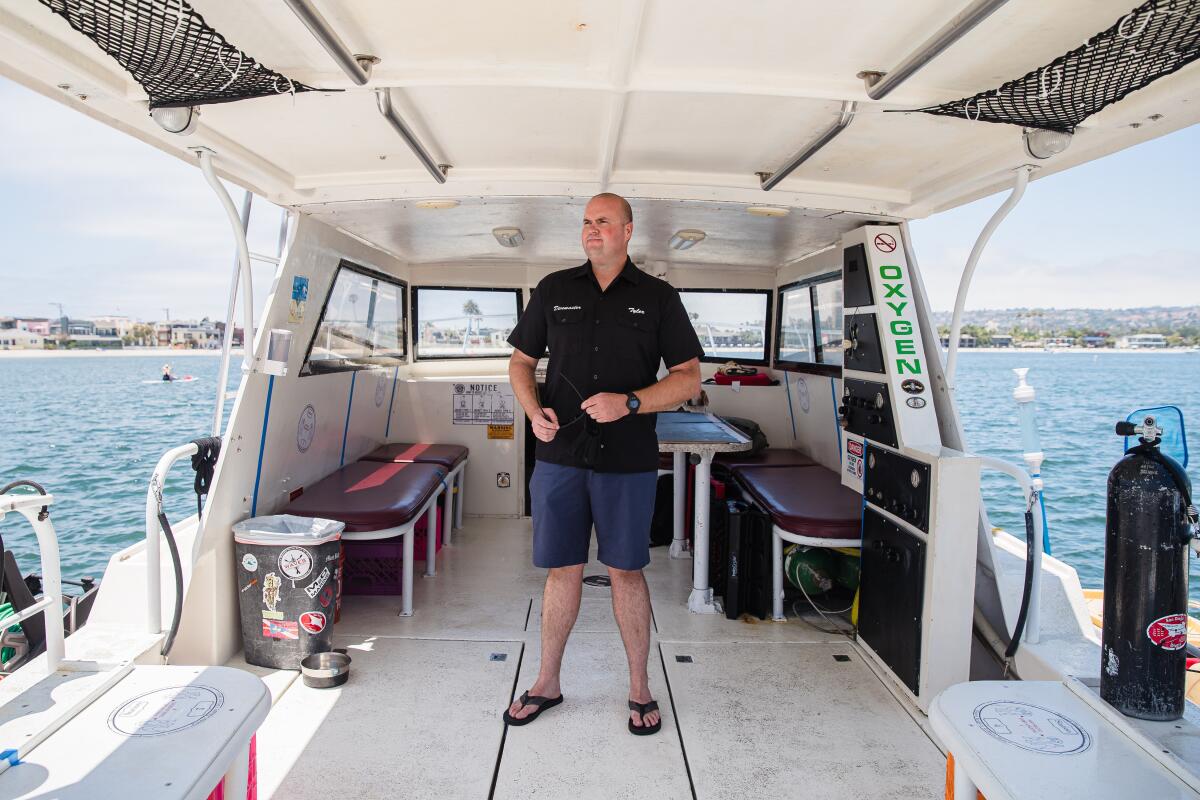
Witnesses saw the Navy SBD Dauntless spin to the right, then to the left, and then hit the water. The pilot and radioman were killed.
Tyler Stalter looked at the sonar map of the ocean floor off Pacific Beach and saw an unusual rectangular, dark spot. Something’s there, he thought. Maybe a barge.
The 34-year-old firefighter likes to scuba dive when he’s off work, and when he dives he likes to explore wrecks. He’s been down to see the Monitor, a Civil War ironclad that sank in a storm of Cape Hatteras, N.C., in 1863. He’s dived the Andrea Doria, an Italian liner that collided with another ship off Nantucket and sank in 1956, killing 50 people.
For the record:
10:10 a.m. June 29, 2020An earlier version of this story had an incorrect date for the Battle of Midway. It was in June of 1942, not May.
He’s intrigued by the back stories of things that somehow wind up on the bottom of the sea. What went wrong, and why? What secrets do they hold?
“You’re seeing history in place, as it ended up,” he said.
He’s not alone in this pursuit. Divers travel all over the world to explore wrecks, which also become artificial reefs for crabs, fish and other sea life. Some cities encourage the activity by intentionally sinking old craft. San Diego has a “Wreck Alley” a few miles off Mission Beach that includes the Yukon, a Canadian destroyer, and the Ruby E, a Coast Guard cutter.
For many divers, finding a previously unknown wreck is especially intriguing, a mystery worth solving. So when Stalter saw that anomaly on the sonar map, he knew would go down to take a look.
In October, he and a diving buddy, Dan Jackson, went out on the Marissa, a charter boat operated by Lora Myers, to a spot about four miles off the coast. Whatever was on the bottom there was almost 200 feet deep, beyond the safe reach of recreational compressed-air tanks. They had to use mixed gases instead, so-called “technical diving” that requires decompression stops on the way up.
It was dark, too, that far down. Stalter approached the wreck with a flashlight in hand, and the first thing he saw didn’t make any sense. He was expecting a barge, but why would a barge have a rubber tire on a metal rim?
Then he saw a hydraulic arm. And a landing gear. And a nine-cylinder radial engine with two propeller blades nearby.
This wasn’t a shipwreck. It was an airplane.
‘Slow But Deadly’
San Diego and Naval aviation go way back, to 1911 and a flying school run by Glenn Curtiss on Coronado’s North Island.
He offered to instruct pilots for free, and the success of the training convinced the admirals that airplanes had a future in the service. They eventually shifted their attention to a carrier-led force, basing the first flat-top, the Langley, here in 1922.
By the time the United States entered World War II after the Dec. 7, 1941, attack on Pearl Harbor, North Island had cemented its place as the pre-eminent spot on the West Coast for Navy fliers. Thousands of pilots trained at what was known then as Naval Air Station San Diego before shipping off to overseas combat.
They trained in seaplanes like the PBY Catalina and fighters like the Hellcat and dive bombers like the SBD Dauntless. The SBD stood for “Scout Bomber Douglas” but air crews joked that the initials really stood for “Slow But Deadly.” And deadly it was.
In early June of 1942, at the Battle of Midway, Dauntless bombers flying off American aircraft carriers wrecked four Japanese carriers and a cruiser.
“For the first half of the war in the Pacific, the Dauntless was the most effective American weapons system,” said Karl Zingheim, historian for the USS Midway, the carrier-turned-museum in San Diego that’s named for the battle. “It helped change the direction of the war.”
Aircraft designers kept making improvements to the Dauntless — longer flight range, better armament — and the older planes got rotated back to the U.S. for training. Some of them wound up in San Diego.
Training wasn’t as dangerous as aerial combat, but it still had risks. The planes were more worn out, the replacement parts less plentiful. And the pilots less experienced.
About 15,000 aviators were killed in stateside training accidents during the war. About 2,400 of them are still listed as missing by the federal Defense POW/MIA Accounting Agency.
On Aug. 24, 1943, Capt. William Rozelle Parks Jr. and Aviation Radioman Richard Harold Moore climbed into an SBD-3 Dauntless at NAS San Diego. Parks, who was from New Orleans, had been flying for about a year. Moore had been married earlier in the year in his hometown of Bloomington, Ill. His wife had just joined him in San Diego.
Their job that day was to “stream a sleeve” — tow a nylon tube that would be used by gunners in other planes for target practice.
At about 10:30 a.m., they were 2,000 feet up off the coast of San Diego. They released the target tube. Witnesses saw the plane spin to the right, then spin to the left, and then hit the water. It burst into flames and sank.
When a crash boat arrived, they found debris in the water: an oxygen bottle, three rolled-up and singed towing tubes, and two gloves.
‘Hallowed sites’
Coming back up from his dive last October, Stalter wondered what kind of airplane he’d found.
It was mostly in pieces, but he could make out the fuselage, upside down in the sand. There was a winch on the bottom, with a piece of steel cable still attached. The wings had unusual air brakes, perforated flaps attached along the back edge.
He suspected it was from World War II because of the radial engine — it was replaced on later planes — and started researching. He could find only one plane that had that motor and those flaps: the Dauntless.
But which Dauntless?
“There are lots of planes out there,” said Taras Lyssenko, a Chicago businessman whose A & T Recovery has pulled dozens of World War II wrecks out of Lake Michigan and other places, including an SB2C-4 Helldiver plucked from the bottom of Lower Otay Reservoir in 2010. “Most of them are in bad shape.”
Stalter learned from a friend about some World War II records, and in those found an entry describing the Aug. 24, 1943, crash of the Dauntless.
“Right plane, right place,” he said.
The records included an ID number for the plane, which enabled him to track down the accident report. It described how the Dauntless was towing a target tube that day, and another piece of the puzzle fell into place. Towing would explain the winch on the bottom of the wreckage.
Something else became clear to Stalter from the records: Two men had died in the crash, and their bodies were never recovered. He’d gone looking for a wreck and may have found a grave site, too.
He contacted the Naval History and Heritage Command in Washington, D.C., which oversees sunken military craft, and sent the documents he’d found, along with photos of the wreckage.
R.S. Neyland, head of underwater archaeology, said in a letter last month that Stalter’s research provides “strong evidence” about the identity of the plane, but said further investigation is needed to confirm it. He thanked the divers for documenting the site without disturbing it.
“The U.S. Navy considers these wrecks to be hallowed sites,” Neyland wrote, “representative of the courage and sacrifice of U.S. Navy Sailors at a pivotal point in our nation’s history.”
What happens next is unclear. Union-Tribune phone calls and e-mails to the History and Heritage Command and to the Defense POW/MIA Accounting Agency were not returned.
There is a large backlog of cases to investigate. More than 72,500 service members from World War II are listed as missing worldwide.
Stalter’s future is clearer. There are more wrecks out there, he said. More mysteries to solve.
Get Essential San Diego, weekday mornings
Get top headlines from the Union-Tribune in your inbox weekday mornings, including top news, local, sports, business, entertainment and opinion.
You may occasionally receive promotional content from the San Diego Union-Tribune.


